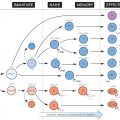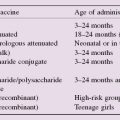When in the summer of 1981 the Centers for Disease Control in the USA noticed an unusual demand for a drug used to treat Pneumocystis pneumonia, a rare infection except in severely immunosuppressed patients, and cases began to be increasingly reported in homosexual men, haemophiliacs receiving certain batches of blood products and drug users sharing needles, it became clear that a potentially terrible new epidemic had hit mankind, more insidious than the plague, more deadly than leprosy. The disease was baptized acquired immune deficiency syndrome (AIDS), and has become the most widely studied infectious disease of all time.
By 1984 the cause had been traced to a virus, now named HIV (human immunodeficiency virus), an RNA lentivirus (a subfamily of the retroviruses) that possesses the enzyme reverse transcriptase. This allows it to copy its RNA into DNA which is then integrated into the nucleus of the cells it infects, principally T-helper cells and macrophages. By processes still not fully understood, this leads to a slow disappearance of T-helper cells, with derangement of the whole immune system and the development of life-threatening opportunistic infections and tumours. The origin of HIV continues to be debated. Attempts to link the epidemic to contaminated polio vaccine, or even to a political conspiracy have been totally discredited. The most likely hypothesis is that it spread from chimpanzees at some time during the twentieth century, perhaps due to human consumption of infected meat. Enormous effort has gone into trying to develop vaccines against HIV. HIV infection stimulates strong cellular immunity and antibody responses, but these responses never seem to be able to completely eliminate the virus, or even stop it dividing. In part, this may be because the virus infects T-helper cells, and hence blocks the development of full immunity. But the properties of HIV reverse transcriptase also give it an unusual ability to vary its antigens, which makes protective immunity or vaccination very difficult to attain.
HIV
I and II, the AIDS viruses, closely related to the simian (monkey) virus SIV and more distantly to retroviruses such as HTLV I and II, which are rare causes of T-cell leukaemias. Their genome consists of double-stranded RNA. HIV II causes a much slower and less aggressive disease, and is predominantly found in Africa.
Gag
The gene for the core proteins p17, p24 and p15. Like many viruses, HIV uses single genes to make long polyproteins which are then cut up by the virus’s own enzyme (a protease) into a number of different functional units. Drugs that block this protease are an important class of HIV inhibitors.
Pol
The gene for various enzymes, including the all-important reverse transcriptase.
Env
The gene for the envelope protein gp160, which is cleaved during viral assembly to make gp120, the major structural protein of the viral envelope. Interaction with the CD4 molecule found on T cells and macrophages, and a second interaction with a chemokine receptor (usually CCR5 or CXCR4), allows the virus to infect cells. About 1 in 10 000 Caucasian individuals have a homozygous deletion in CCR5, and these individuals are highly resistant to infection with HIV. Gag, pol
Stay updated, free articles. Join our Telegram channel

Full access? Get Clinical Tree





